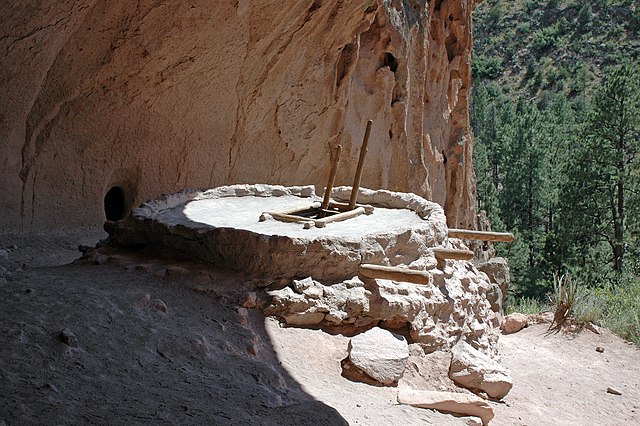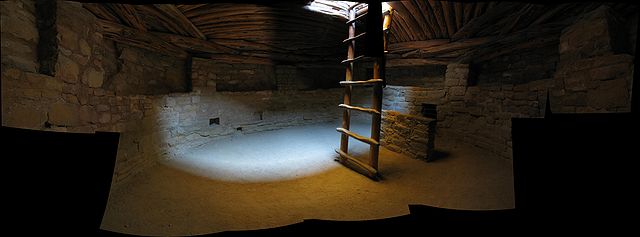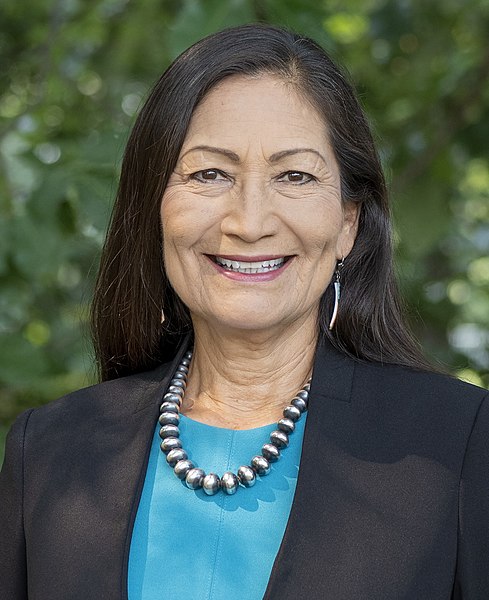A kiva is a space used by Puebloans for rites and political meetings, many of them associated with the kachina belief system. Among the modern Hopi and most other Pueblo peoples, "kiva" means a large room that is circular and underground, and used for spiritual ceremonies.
Reconstructed kiva at Bandelier National Monument
Interior of a reconstructed kiva at Mesa Verde National Park
Ruins of a great kiva at Chaco Culture National Historical Park
The Great Kiva at Aztec Ruins National Monument was excavated by Earl Morris in 1921 and reconstructed by him 13 years later.
The Puebloans, or Pueblo peoples, are Native Americans in the Southwestern United States who share common agricultural, material, and religious practices. Among the currently inhabited Pueblos, Taos, San Ildefonso, Acoma, Zuni, and Hopi are some of the most commonly known. Pueblo people speak languages from four different language families, and each Pueblo is further divided culturally by kinship systems and agricultural practices, although all cultivate varieties of corn (maize).
Tribal Council Building, Isleta Pueblo NM
Debra Haaland, one of the first Native American women elected to the House of Representatives, is a citizen of Laguna Pueblo.
Jemez Pueblo shield, c. 1840
A Zuni drying platform for maize and other foods, with two women crafting pottery beneath it. From the Panama-California Exposition, San Diego, California. January 1915.








